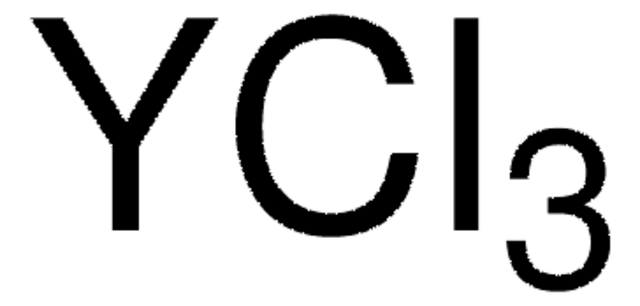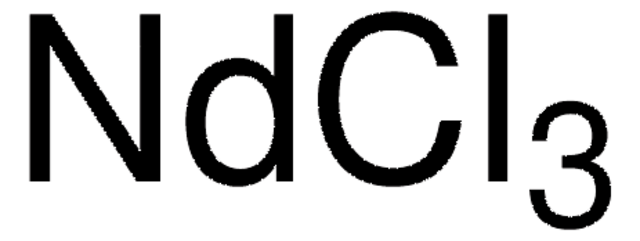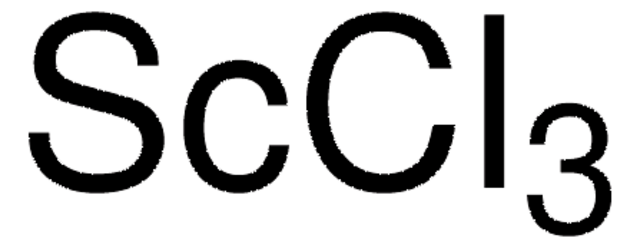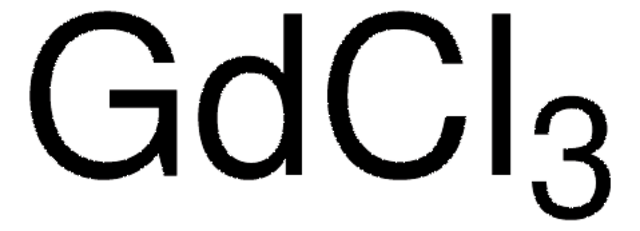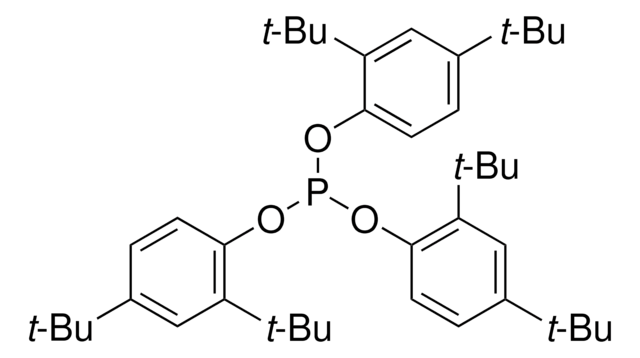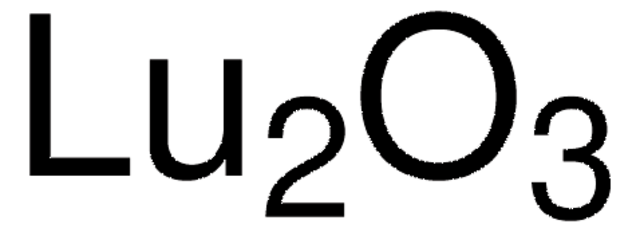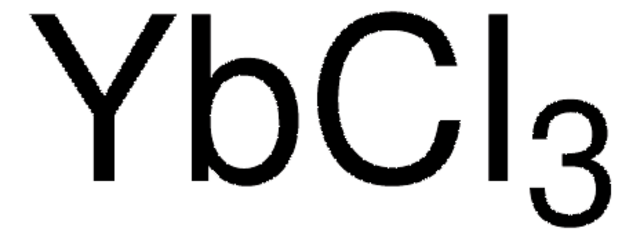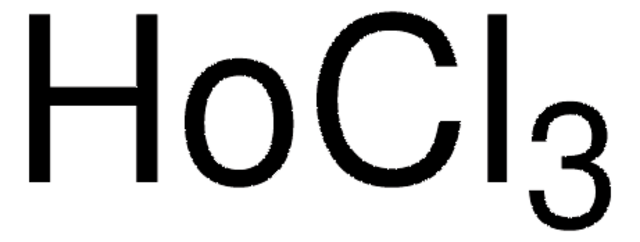450960
Lutetium(III) chloride
anhydrous, powder, 99.99% trace metals basis
Synonyme(s) :
Lutetium chloride, Lutetium trichloride
About This Item
Produits recommandés
Qualité
anhydrous
Pureté
99.99% trace metals basis
Forme
powder
Pertinence de la réaction
reagent type: catalyst
core: lutetium
Impuretés
≤150.0 ppm Trace Rare Earth Analysis
Pf
905 °C (lit.)
Densité
3.98 g/mL at 25 °C (lit.)
Chaîne SMILES
Cl[Lu](Cl)Cl
InChI
1S/3ClH.Lu/h3*1H;/q;;;+3/p-3
Clé InChI
AEDROEGYZIARPU-UHFFFAOYSA-K
Application
- As a precursor to synthesize chiral bridged lutetium catalyst for asymmetric hydroamination.
- As a starting material to prepare doped lutetium oxide nanophosphors.
- To fabricate scintillation detectors such as lutetium aluminum garnet (LuAG).
Code de la classe de stockage
11 - Combustible Solids
Classe de danger pour l'eau (WGK)
WGK 2
Point d'éclair (°F)
Not applicable
Point d'éclair (°C)
Not applicable
Équipement de protection individuelle
dust mask type N95 (US), Eyeshields, Gloves
Certificats d'analyse (COA)
Recherchez un Certificats d'analyse (COA) en saisissant le numéro de lot du produit. Les numéros de lot figurent sur l'étiquette du produit après les mots "Lot" ou "Batch".
Déjà en possession de ce produit ?
Retrouvez la documentation relative aux produits que vous avez récemment achetés dans la Bibliothèque de documents.
Les clients ont également consulté
Articles
The rare earth elements impact nearly everyone in the world. All of the people living in advanced technological countries and almost all those living in third world countries utilize the rare earths in their everyday living—the car that one drives (gasoline is refined from oil using rare earth catalysts and catalytic converters reduce the polluting emissions from the automotive exhaust), watching the news on TV (the red and green colors in TV screens), the telephones and computers we use to communicate (the permanent magnets in speakers and disc drives), just to name a few examples.
Notre équipe de scientifiques dispose d'une expérience dans tous les secteurs de la recherche, notamment en sciences de la vie, science des matériaux, synthèse chimique, chromatographie, analyse et dans de nombreux autres domaines..
Contacter notre Service technique